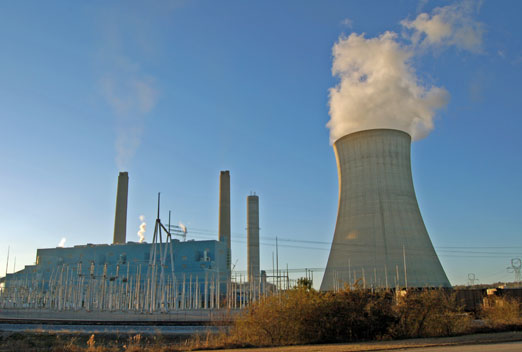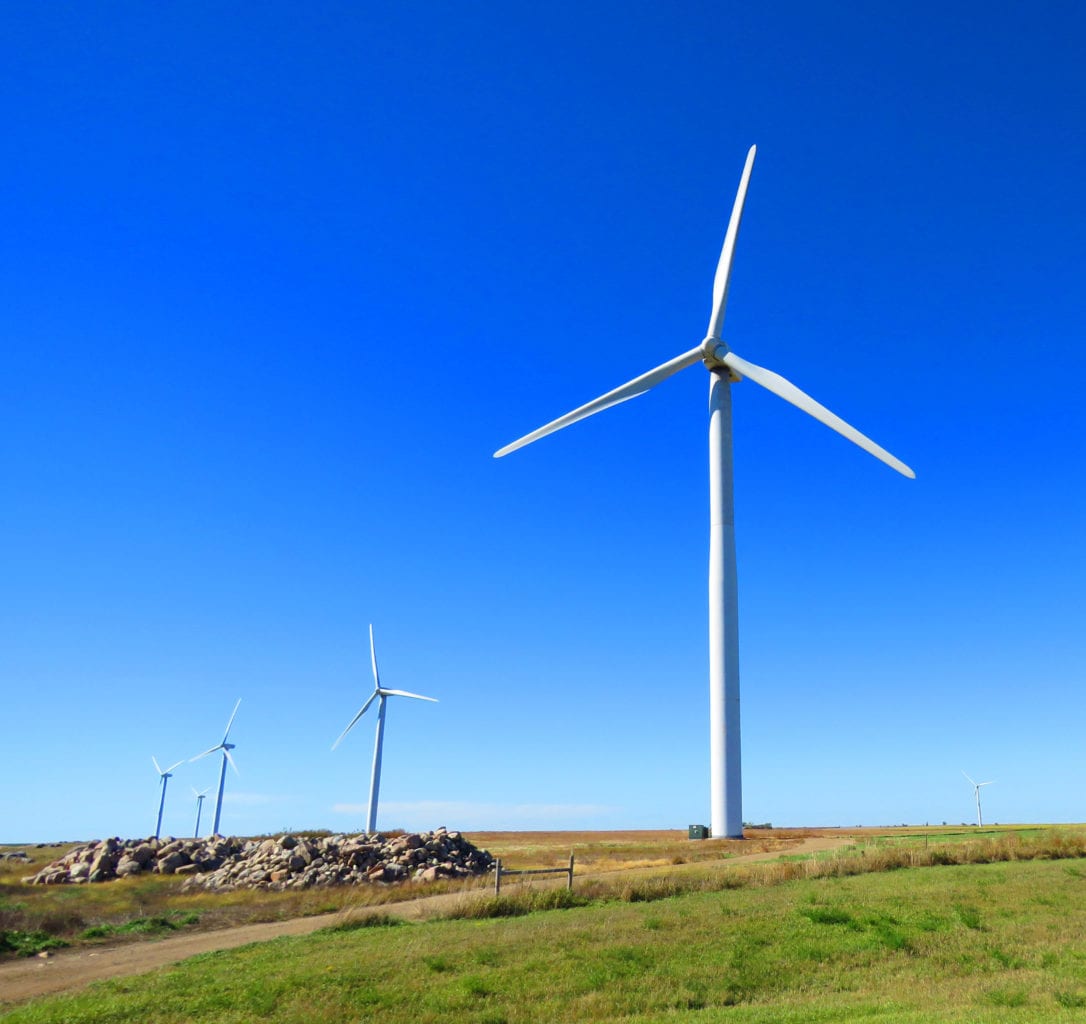
Alabama Power’s Miller Steam Plant on the Locust Fork of the Black Warrior River emits more mercury into the air than any other power plant in the country. It is also a source of fine particulate pollution and ozone, which cause the Ozone allergy or the Ozone Flu: Glynn Wilson
By Glynn Wilson –
WASHINGTON, D.C. — Defying critics and in an effort to bring the United States back to its leadership role on the world stage in fighting climate change due to global warming from the burning of fossil fuels for energy, the Biden administration announced major new regulations to limit greenhouse pollution from power plants this week designed to eliminate carbon dioxide emissions from the nation’s electricity sector by 2040.
By setting caps on pollution rates that power plant operators would have to meet, the new standards for coal and new natural gas fired power plants would prevent more than 600 million metric tons of CO2 pollution from being pumped into the atmosphere over the next 20 years.
Environmental Protection Agency administrator Michael Regan, who oversaw the drafting of the new regulations, announced the new rules in a speech on the campus of the University of Maryland on Thursday and talked about the effort to reduce harmful pollutants, protect public health and deliver up to $85 billion in climate and public health benefits over the next two decades.
“By proposing new standards for fossil fuel-fired power plants, EPA is delivering on its mission to reduce harmful pollution that threatens people’s health and wellbeing,” Regan said.
“EPA’s proposal relies on proven, readily available technologies to limit carbon pollution and seizes the momentum already underway in the power sector to move toward a cleaner future,” he added. “Alongside historic investment taking place across America in clean energy manufacturing and deployment, these proposals will help deliver tremendous benefits to the American people — cutting climate pollution and other harmful pollutants, protecting people’s health, and driving American innovation.”
The nation’s 3,400 coal- and gas-fired power plants generate about 25 percent of greenhouse gases produced in the U.S., pollution that is dangerously heating the planet, according to the science and the experts.
The proposal for coal and new natural gas power plants would avoid up to 617 million metric tons of total carbon dioxide (CO2) through 2042, equivalent to reducing the annual emissions of 137 million passenger vehicles, roughly half the cars in the country. Through 2042, EPA estimates the net climate and health benefits of the standards on new gas and existing coal-fired power plants are up to $85 billion, while also preventing 300,000 asthma attacks and 1,300 premature deaths by 2030 alone.
The proposals would also result in cutting tens of thousands of tons of particulate matter (PM2.5), sulfur dioxide and nitrogen oxide, harmful air pollutants that are known to endanger people’s health, especially in communities that for many years have disproportionally shouldered the burden of high pollution and environmental injustice.
In 2030 alone, the proposed standards would prevent approximately 1,300 premature deaths in the U.S., more than 800 hospital and emergency room visits, more than 300,000 cases of asthma attacks, 38,000 school absence days and 66,000 lost workdays.
The government is not mandating the use of equipment to capture carbon emissions before they leave the smokestack, a nascent and expensive technology. Power plants would have to use a different technology or, in the case of gas plants, switch to a fuel source like green hydrogen, which does not emit carbon.
Officials may have chosen the university setting for the announcement to appeal to youth climate activists who they hope will help turn out the vote for Biden’s 2024 re-election campaign.
“We are in the decisive decade for climate action, and the president’s been clear about his goals in this space, and we will meet them,” Biden’s senior climate adviser, Ali Zaidi, said in a telephone call with reporters on Wednesday.
The regulations governing power plants come on the heels of other Biden administration plans to cut tailpipe emissions by speeding up the country’s transition to electric vehicles, to curb methane leaks from oil and gas wells and to phase down the use of a planet-warming chemical in refrigerants.
Related Coverage
Biden Administration Proposes Tough New Pollution Standards for Cars and Trucks
Biden Administration Proposes Stronger Mercury and Air Toxic Standards for Power Plants
Together with the 2022 Inflation Reduction Act, which is pouring more than $370 billion into clean energy programs, the actions would bring the U.S. back to the forefront of the battle to combat the rise in the global temperature and put the country on track to meet Biden’s pledge that the nation would cut its greenhouse gases in half by 2030 and stop adding carbon dioxide to the atmosphere altogether by 2050.
That is the action required of all major industrialized nations, scientists say, to keep average global temperatures from increasing by 1.5 degrees Celsius (2.7 degrees Fahrenheit), compared with preindustrial levels. Beyond that point, the effects of catastrophic heat waves, flooding, drought, crop failure and species extinction would become significantly harder for humanity to handle. The consensus is that the planet has already warmed by an average of 1.1 degrees Celsius.
“Each of these several regulations from the EPA are contributing to the whole picture that is necessary to steer this ocean liner away from the worst climate disaster,” said Dallas Burtraw, an economist with Resources for the Future, a nonpartisan research organization that focuses on energy and environmental policy.
Officials say the proposed regulations are designed to offer flexibility to industry and ensure that the lights remain on and that electricity bills will not go up. Coal plants that are already scheduled to retire before 2032 may not have to install new pollution controls like carbon capture technology. About a quarter of operating coal-fired power plants are already scheduled to retire by 2029, according to the Energy Information Administration.
In fact, the new regulation is designed to speed up changes that are already underway in the energy industry. Coal, the dirtiest fossil fuel, is in decline. No new coal plants have been built in the U.S. in the last decade. In the same time frame, the cost of wind and solar power has plummeted, and electricity generation from wind turbines and solar panels has more than tripled. Wind now generates more than 10 percent of the nation’s electricity, and solar power now generates about 3 percent and is growing fast.
As a result, planet-warming pollution from power plant smokestacks has dropped by about 25 percent in the last decade, absent any direct government regulations.
In recent years, many large electric utilities have announced targets to stop adding carbon dioxide to the atmosphere by 2045 or 2050.
Lawyers and lobbyists with the Edison Electric Institute have met with EPA officials at least two dozen times over the past two years to discuss the climate rule and other power plant regulations.
“Our emissions continue to go down as a sector, and we predict that will continue to happen regardless of the rule,” said Emily Fisher, executive vice president of clean energy and general counsel at the Edison Electric Institute, an organization that lobbies on behalf of investor-owned electric utilities.
But some lobbyists say that despite that input, the new rules will push the industry to do more than it can achieve.
“There is a lot of consternation that those targets are as fast as they can go,” said Jeffrey Holmstead, a lawyer who represents fossil fuel companies and electric utilities with the firm Bracewell L.L.P. “They didn’t just come up with those targets on the back of an envelope. If the idea is to go significantly faster than that, then companies are going to have real concerns.”
Lissa Lynch, a lawyer with the Natural Resources Defense Council, an advocacy group, said that electric utilities had complained about new clean air regulations for decades but had ultimately managed to comply.
“The industry always claims they are impossible to meet, cost too much money, threaten reliability and the economy,” she said of the regulations. “Ultimately they go on to innovate and comply, often well in advance of the deadlines that are set.”
The plan is sure to face opposition from the fossil fuel industry, however, including power plant operators and their allies in Congress. It is likely to draw an immediate legal challenge from a group of Republican attorneys general that has already sued the Biden administration to stop other policies designed to fight climate change. A future administration could also weaken the regulations.
“This proposal will further strain America’s electric grid and undermine decades of work to reliably keep the lights on across the nation,” said Jim Matheson, president of the National Rural Electric Cooperative Association, which operates power plants serving the nation’s least developed communities.
Many environmental activists have been criticizing Biden after his decision in March to approve an enormous oil drilling project on pristine federal land in Alaska, known as Willow. They view the president’s actions as a betrayal of his 2020 campaign promise to halt new oil and gas drilling on public land.
The White House argues that the collective impact of Biden’s climate regulations and legislation, in terms of reduced emissions, outweighs any environmental damage that would be caused by the Willow project. Burning oil drilled at the Willow site would only emit an estimated 280 million tons of planet-warming carbon dioxide, according to the White House.
Senator Joe Manchin III, the West Virginia Democrat who has long fought any threat to his home state’s coal industry and has floated the trial balloon of an independent run for president in 2024, said on Wednesday that he would oppose all of Biden’s nominees to the EPA unless the administration dropped the regulations — a threat that could have teeth in the narrowly divided Senate.
“This administration is determined to advance its radical climate agenda and has made it clear they are hellbent on doing everything in their power to regulate coal- and gas-fueled power plants out of existence, no matter the cost to energy security and reliability,” Manchin said.
He has earned millions from his family’s coal business, and faces a potentially difficult re-election campaign next year that could pit him against Gov. Jim Justice, a Republican who has announced he will run for the Senate in 2024. West Virginia has increasingly shifted to the right as voters there backed Donald Trump over Biden by 39 points in 2020.
Nearly a decade ago, Biden’s former boss as Vice President, President Barack Obama, tried to regulate emissions from power plants, writing broad and ambitious rules that were designed to replace coal-fired plants with wind farms and solar panels. That policy was never implemented, first blocked by the Supreme Court and later rolled back by President Trump.
The Supreme Court ruled last summer that the EPA had the authority to regulate carbon dioxide emissions from power plants, but in a limited way. Biden administration officials involved with the new power plant rule — many of whom worked on the defunct Obama rule — have sought to ensure that this time, it will stand up to scrutiny.
“In light of what the Supreme Court ruled, they’re not swinging for a home run,” said Richard Lazarus, an environmental law professor at Harvard Law School. “They’re swinging for a hit.”
Consistent with EPA’s traditional approach to establishing pollution standards under the Clean Air Act, the proposed limits and guidelines would require ambitious reductions in carbon pollution based on proven and cost-effective control technologies that can be applied directly to power plants.
They also provide owners and operators of power plants with ample lead time and substantial compliance flexibilities, allowing power companies and grid operators to make sound long-term planning and investment decisions, and supporting the power sector’s ability to continue delivering reliable and affordable electricity. EPA’s analysis found that power companies can implement the standards with a negligible impact on electricity prices, well within the range of historic fluctuations.
Together with other recent EPA actions to address health-harming pollution from the power sector, the new proposed rule delivers on the administration’s commitment to reduce pollution from the power sector while providing long-term regulatory certainty and operational flexibility.
In addition, EPA and the Department of Energy recently signed a memorandum of understanding to support grid reliability and resiliency at every stage as the agency advances efforts to reduce pollution, protect public health, and deliver environmental and economic benefits for all.
President Biden’s policy agenda has already kicked off a clean energy and manufacturing boom across the country and is adding momentum for technologies like carbon capture and storage and clean hydrogen, according to the EPA announcement.
“Thanks to this progress, the power sector has a broad set of tools to deploy clean, affordable energy, take advantage of ready-to-go advanced pollution reduction technologies, create and retain good-paying union jobs, and reduce energy costs for families and businesses,” the agency says. “EPA took account of this significant technologic and economic progress in developing the proposed rule and anticipates that power companies will take advantage of these tools and trends when determining how to most cost-effectively meet the proposed standards and emission guidelines.”
The technology-based standards include strengthening the current New Source Performance Standards for newly built fossil fuel-fired stationary combustion turbines (generally natural gas-fired plants). It establishes emission guidelines for states to follow in limiting carbon pollution from existing fossil fuel-fired steam generating plants, including coal, oil and natural gas-fired units. It establishes emission guidelines for large, frequently used existing fossil fuel-fired stationary combustion turbines (generally natural gas-fired).
Based on a separate analysis, EPA is projecting the proposed standards for existing gas-fired plants and the third phase of the NSPS could achieve up to 407 million metric tons of CO2 emission reductions. As EPA works to finalize the rulemaking, the agency will complete additional advanced modeling, aligning methodologies across the rulemaking and considering real-world scenarios within the power sector to best understand how components of the rule impact each other.
As required by section 111 of the Clean Air Act, these proposed standards and emission guidelines reflect the best system of emission reduction that has been demonstrated to improve the emissions performance of the sources, taking into account costs, energy requirements and other factors. In developing the new standards, EPA considered a range of technologies.
Installation of controls such as CCS for coal and gas plants, and low-GHG hydrogen co-firing for gas plants are more cost-effective for power plants that operate at greater capacity, more frequently or over longer time periods. The proposed standards and guidelines take this into account by establishing standards for different subcategories of power plants according to unit characteristics such as their capacity, their intended length of operation, and/or their frequency of operation.
The proposal requires that states, in developing plans for existing sources, undertake meaningful engagement with affected stakeholders, including communities disproportionately burdened by pollution and climate change impacts, as well the energy communities and workers who have powered our nation for generations.
President Biden’s Interagency Working Group on Coal and Power Plant Communities and Economic Revitalization has identified historic resources for energy communities to invest in infrastructure, deploy new technologies that can help clean up the electric power sector, support energy workers and spur long-term economic revitalization.
EPA also conducted an environmental justice analysis, which shows these proposals would, play a significant role in reducing greenhouse gas pollution, helping avoid the worst impacts of climate change, which is already having a disproportionate impact on underserved and overburdened communities.
EPA’s proposal also follows guidance from the Council on Environmental Quality to ensure that the advancement of carbon capture, utilization, and sequestration technologies are done in a responsible manner that incorporates the input of communities and reflects the best available science. Consistent with this guidance, EPA will engage with communities and stakeholders on opportunities to ensure that deployment of carbon capture and sequestration under the proposal is done in a responsible manner.
The proposed standards build on the momentum already underway in the power sector to move toward a cleaner future. Since 2005, the power sector has reduced carbon dioxide emissions 36 percent while continuing to keep pace with growing energy demand.
“President Biden’s Inflation Reduction Act provides historic investments in pollution control technologies and clean energy, and together, will move the United States closer to ensuring a cleaner, healthier future for all communities,” EPA says.
EPA will take comment on these proposals for 60 days after publication in the Federal Register. EPA will also hold a virtual public hearing and will make additional information available on the website. Registration for the public hearing will open after the proposal is published.
The agency will also host virtual trainings to provide communities and Tribes with information about the proposal and about participating in the public comment process. Those trainings will be on June 6 and 7, and registration information is available on EPA’s website.
See more about the agency’s proposals online here.
___
If you support truth in reporting with no paywall, and fearless writing with no popup ads or sponsored content, consider making a contribution today with GoFundMe or Patreon or PayPal. We just tell it like it is, no sensational clickbait or pretentious BS.














